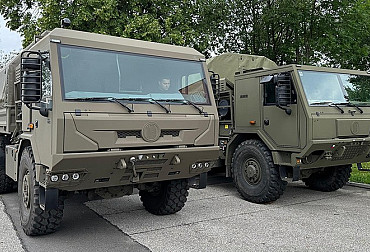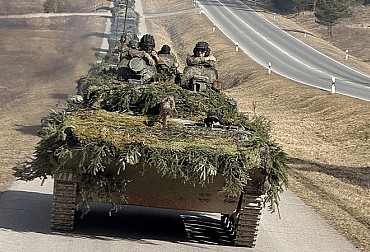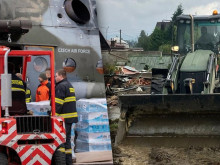Soldiers trained how to survive in extreme conditions
The ability to save oneself in the event of sudden emergency situations is one of the basic skills and is an integral part of the training of both flight personnel and members of the Ground Forces. Since 2011 all the members of the Army of the Czech Republic have been undergoing training that prepares soldiers to master these skills and is known under the acronym S. E. R. E.

Picture: S.E.R.E., level C, for helicopter crews: Deployment of soldiers in an unknown area | army.cz
Three levels, the highest one for pilots
The Air Crews of the machines from the 22nd Air Force Helicopter Base Sedlec, Vícenice u Náměště nad Oslavou, tested how they would behave in difficult situations, for example, after an emergency exit from a helicopter, an accident or the shooting down of a helicopter and would not become prisoners of enemy units.
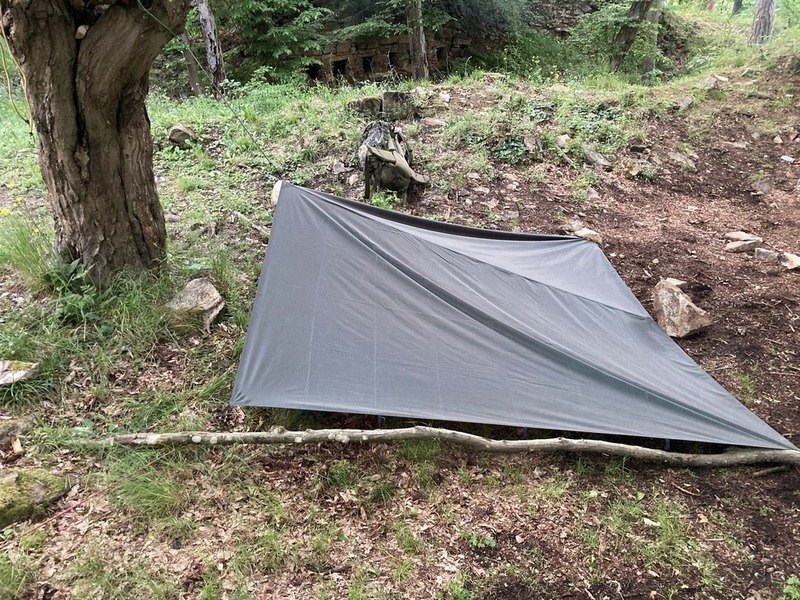
Picture: S.E.R.E., level C, for helicopter crews: Improvised shelter | army.cz
The training of S. E. R. E. (Survival, Escape/Evasion, Resistance, Extraction) is divided into three levels of difficulties (A, B, C), while the flight personnel must achieve the highest one. Under the guidance of certified instructors from the rescue and airborne training of the helicopter base, the helicopter crews trained procedures in survival, escape, avoidance of captivity, resistance in captivity and collection. Soldiers must complete the initial basic course of S. E. R. E. of the level C at the Training Headquarters – Military Academy in Vyškov and it is valid for three years. After this period, the refresher course is prepared for them at the parent base and must be repeated every three years.
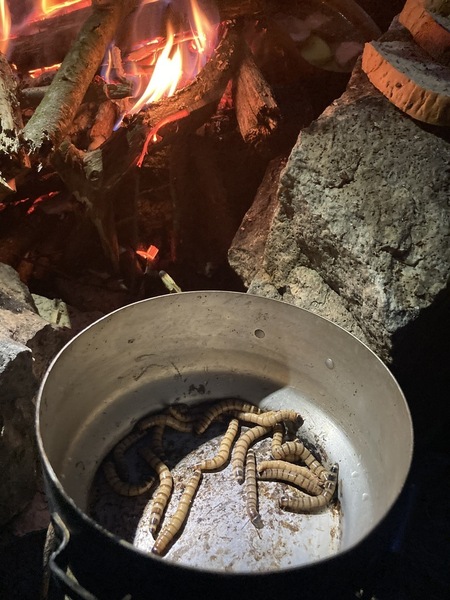
Picture: S.E.R.E., level C, for helicopter crews: Food | army.cz
After the opening briefing and distribution of map materials, the soldiers were deployed into an unknown area by the helicopter. During the allotted time, they had to move covertly along the route to a designated point of pickup – rescue. The basic task was to move in the field silently and secretly so that they would not be captured. During the transfer, traps, ambush and guard posts were waiting for them with the aim to catch them, even using a guard unit with service dogs. “In the event of captivity, they find themselves in a phase of resilience and psychological pressure, when they are forced to divulge sensitive information,” said the main instructor, Captain MH. “After a difficult move, they must quickly build temporary improvised shelters for the night, prepare a hidden fireplace and food,” added M.H.
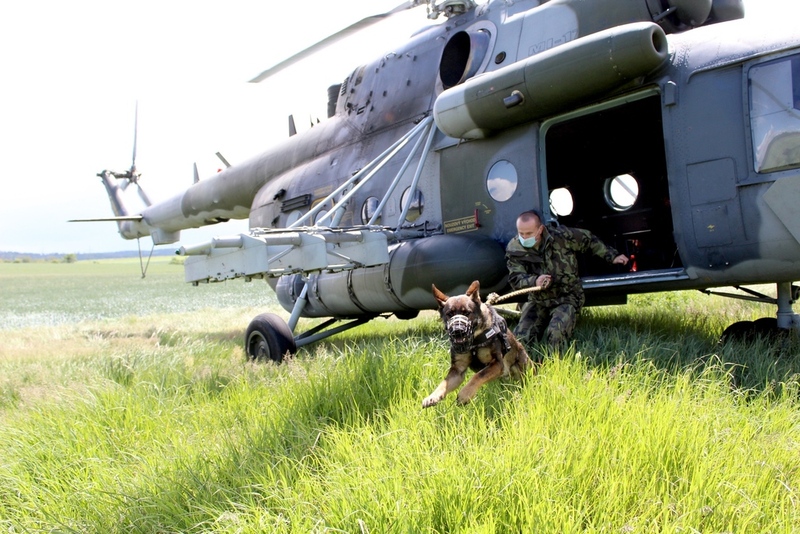
Picture: S.E.R.E., level C, for helicopter crews: Deployment of a guard unit with service dogs | army.cz
The alpha and omega of a successful rescue of an isolated person is the communication with the aim of checking the rescued person and navigating the life-saving appliance (helicopter). The flight personnel must unconditionally manage clearly defined communication and navigation procedures. Communication takes place in English on the rescue radio station on an internationally specified frequency.
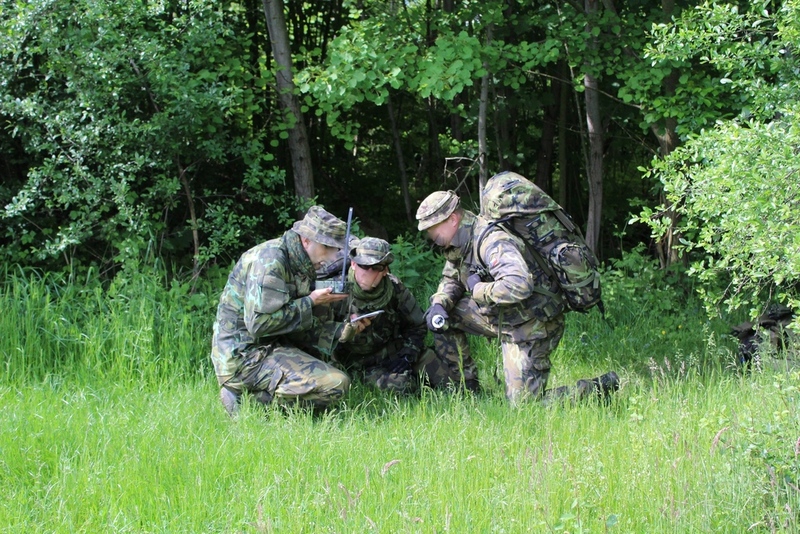
Picture: S.E.R.E., level C, for helicopter crews: Communication of isolated persons with the rescue helicopter by means of a radio station | army.cz
“In the following days, the soldiers underwent sleep deprivation, physical and mental exhaustion without the possibility of supplementing the diet and with a minimum amount of water,” described M.H. All these activities led in the most sensitive phase of the operation, being picked up by the air rescue team. The pick-up itself does not only lie in perfect communication and cooperation with the rescue helicopter crew, but also in precise navigation and signalling the right place by means of signalling means.
The training of the S. E. R. E. places high demands on individuals in the areas of mental stress, manual skills and technical skills. “The pilot, as an isolated person, must demonstrate a high degree of rapid decision-making process, personal maturity and a willingness to reach the bottom of his own limits,” concludes the Captain M.H.
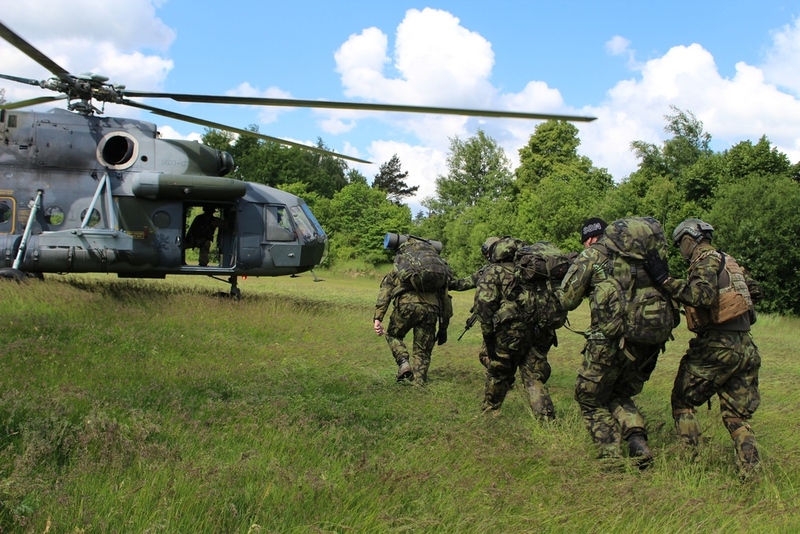
Picture: S.E.R.E., level C, for helicopter crews: Transfer to a rescue helicopter | army.cz
S. E. R. E. for the unit assigned to the EU Battlegroup
The S. E. R. E. course of the B level was primarily determined for the members of the 42nd Mechanized Battalion in the Tábor crew who are currently assigned to the European Union Battlegroup led by Germany in the second half of this year.
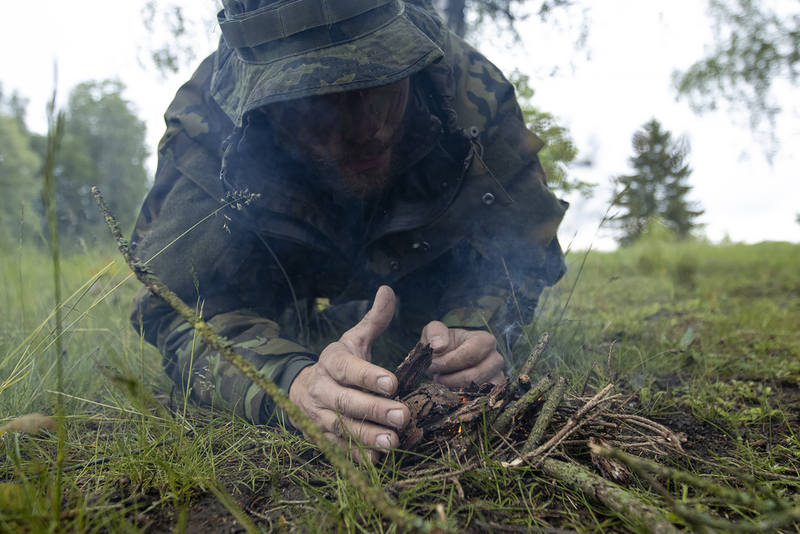
Picture: S.E.R.E., level B, for soldiers assigned to the EU Battlegroup: Making fire without matches | army.cz
The category B is intended for all soldiers who are getting ready for foreign operations or are the part of a unit predetermined for deployment outside the Czech Republic, including all airborne expertise. It will apply to all members of combat units in the future.
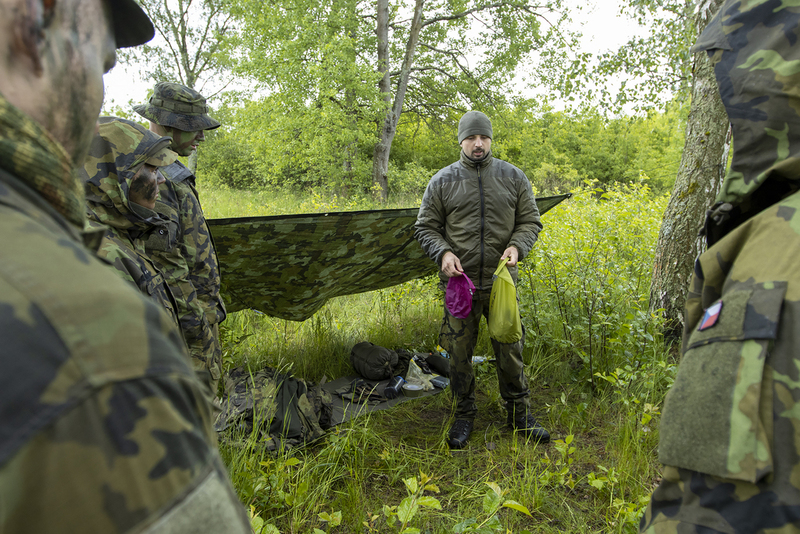
Picture: S.E.R.E., level B, for soldiers assigned to the EU Battlegroup: Demonstration of material packaging | army.cz
“This course mainly focuses on situations when a soldier is in captivity. We train everyone to cope with the covert movement from the scene of incident to the pick-up point and to make contact with their unit, etc. Then we pay more attention to captive activities, i.e. how to help each other during interrogation, how to respond, react and how to behave,” explained the instructor, the Master Sergeant J. V.















